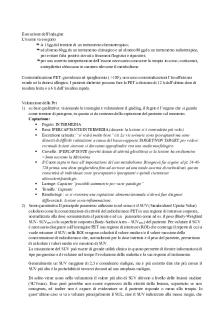MSc Pet Geo 2019 exam - Final PDF

| Title | MSc Pet Geo 2019 exam - Final |
|---|---|
| Course | MSc Strategic Marketing |
| Institution | Imperial College London |
| Pages | 3 |
| File Size | 57 KB |
| File Type | |
| Total Downloads | 39 |
| Total Views | 137 |
Summary
Strategic Marketing - Slides MEF 2019/2020...
Description
IMPERIAL COLLEGE LONDON
Metals and Energy Finance (MSc)
Petroleum and Mineral Geoscience
Petroleum Engineering
Tuesday 8th January 2019, 14.00 to 15.00
Answer EITHER Questions 1 OR Question 2
DO NOT OPEN THIS EXAMINATION PAPER UNTIL INSTRUCTED TO DO SO BY THE INVIGILATOR
Imperial College London
Answer EITHER Questions 1 OR Question 2 QUESTION 1 Material balance for a gas field
(i) Define the difference between the producing gas/oil ratio, the solution gas/oil ratio and the cumulative gas/oil ratio. Show a phase diagram for a black oil that illustrates the meaning of the solution gas/oil ratio. (12 marks)
(ii) You have the following production data for a gas field that might be produced by a natural water drive. Gp Pressure Bg (106 scf) (MPa) (rb/scf) 0 38 0.000605 75 37 0.000624 160 36 0.00066 235 35 0.000702 310 34 0.000755 33 0.00735 32 0.00779 31 0.00824 30 0.00892 The initial water saturation is 0.15 and the residual gas saturation, from laboratory measurements, is 0.26. The material balance equation is: Bg i We G p G1 Bg B g
Assuming a simple aquifer model, make an approximate estimate of the original gas in place and the value of the aquifer size times the aquifer compressibility. You may neglect the compressibility of the connate water and rock in the gas field itself. (18 marks) (iii) What is the recovery factor now? What is the average gas saturation in the field? What fraction of the recovery to date can be attributed to water drive, and what to gas expansion? What is the pressure drop necessary for water influx to invade the whole field? What is the likely final recovery factor? Explain your working carefully.
(20 marks) Total: 50 marks
2
QUESTION 2 You measure the following from appraisal wells in an oilfield:
Depth (m) 3,482 3,739 3,862
Fluid and density (kg.m-3) Gas, 410 Oil, 530 Water, 1,020
Pressure (MPa) 34.54 35.65 36.72
The acceleration due to gravity = 9.81 ms-2. surface. (i)
Depths are measured from the
Is the reservoir normally pressured, over pressured or under pressured? Explain your answer. (4 marks)
(ii)
Find the depths of the free oil and free water levels. Hence find the height of the oil column. (18 marks)
(iii)
Explain carefully the concept of capillary pressure: in equilibrium, how does the capillary pressure vary above the free water level? (4 marks)
(iv)
The top of the field is located at 3,450m. What is the capillary pressure between gas and water at the top of the field? (14 marks)
(v)
The average horizontal cross-sectional area of the field is 14 km2, while the average porosity and water saturation in the hydrocarbon-bearing zones are 0.17 and 0.28 respectively. The oil formation volume factor is 1.3. The net-to-gross is 0.72. Estimate the original oil in place. (10 marks)
Total: 50 marks
3...
Similar Free PDFs

MSc Pet Geo 2019 exam - Final
- 3 Pages

PET - PET
- 4 Pages

Final Exam 2019, questions
- 8 Pages

Final Exam 2019
- 19 Pages

Final Exam 2019, questions
- 7 Pages

Final Exam 2019, answers
- 17 Pages

FINAL EXAM 2019, questions
- 4 Pages

Final Exam 2019
- 6 Pages

Final exam 2019
- 12 Pages

Final Exam 2019, questions
- 4 Pages

Final exam 2019, questions
- 12 Pages

2019 Final Exam Solutions
- 12 Pages

GEO 171 final review
- 5 Pages

GEO 702 Final notes
- 83 Pages

trabajo final -ingenieria geo
- 29 Pages
Popular Institutions
- Tinajero National High School - Annex
- Politeknik Caltex Riau
- Yokohama City University
- SGT University
- University of Al-Qadisiyah
- Divine Word College of Vigan
- Techniek College Rotterdam
- Universidade de Santiago
- Universiti Teknologi MARA Cawangan Johor Kampus Pasir Gudang
- Poltekkes Kemenkes Yogyakarta
- Baguio City National High School
- Colegio san marcos
- preparatoria uno
- Centro de Bachillerato Tecnológico Industrial y de Servicios No. 107
- Dalian Maritime University
- Quang Trung Secondary School
- Colegio Tecnológico en Informática
- Corporación Regional de Educación Superior
- Grupo CEDVA
- Dar Al Uloom University
- Centro de Estudios Preuniversitarios de la Universidad Nacional de Ingeniería
- 上智大学
- Aakash International School, Nuna Majara
- San Felipe Neri Catholic School
- Kang Chiao International School - New Taipei City
- Misamis Occidental National High School
- Institución Educativa Escuela Normal Juan Ladrilleros
- Kolehiyo ng Pantukan
- Batanes State College
- Instituto Continental
- Sekolah Menengah Kejuruan Kesehatan Kaltara (Tarakan)
- Colegio de La Inmaculada Concepcion - Cebu
